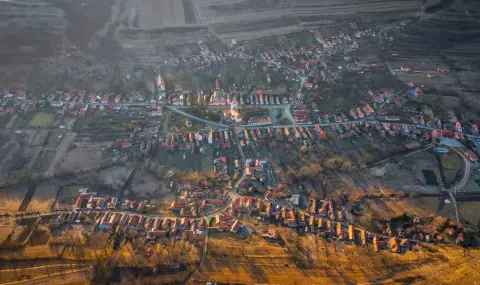The Romanian village of Rimetea was first mentioned in historical documents in 1257. In the past, it was an important crafts center. It was inhabited by Saxons and Szekler (part of the Hungarian ethnic group). Currently, it is the proud winner of the “Destination of 2025” award and the “Our Europe” (Europa Nostra) award of the European Commission. In 1999, it was also nominated for inclusion in the UNESCO World Heritage List, and in 2000, the National Service for Historical Monuments designated it a protected architectural zone, BTA writes.
The village is located almost halfway between two counties - Cluj and Alba Iulia, at the foot of the Apuseni Mountains. It is surrounded by high mountains. The most famous of them is the limestone massif of Piatra Secuiiului, which is divided into two parts by a ravine. This division of the massif is also the reason why Rimești is also called the village where the sun rises twice. The unique phenomenon can be observed in July. Due to the location of the village at the foot of the mountain, the sun rises, then hides behind its crest and rises again.
But it is not only this phenomenon that attracts tourists, but also the appearance of Rimești. It is no coincidence that Deutsche Welle called it one of the most beautiful villages in the entire country. You will see this for yourself while looking at the carefully restored old white houses with green dormers on the windows and colorful plates with their numbers. Some of the houses have been converted into souvenir shops, where you can also find herbal teas typical of the region, as well as delicious homemade sweets.
The oldest house dates back to 1668. Memories of the past are also preserved in the village's Ethnographic Museum, which houses a huge collection of folk costumes from the region and other objects once used by the locals. Nearby is a mill that dates back to 1752 and is considered one of the oldest in the area.
